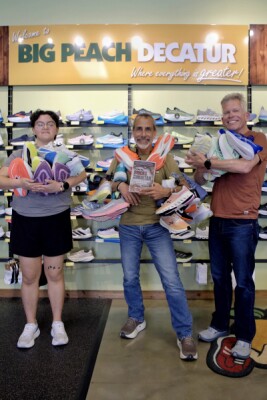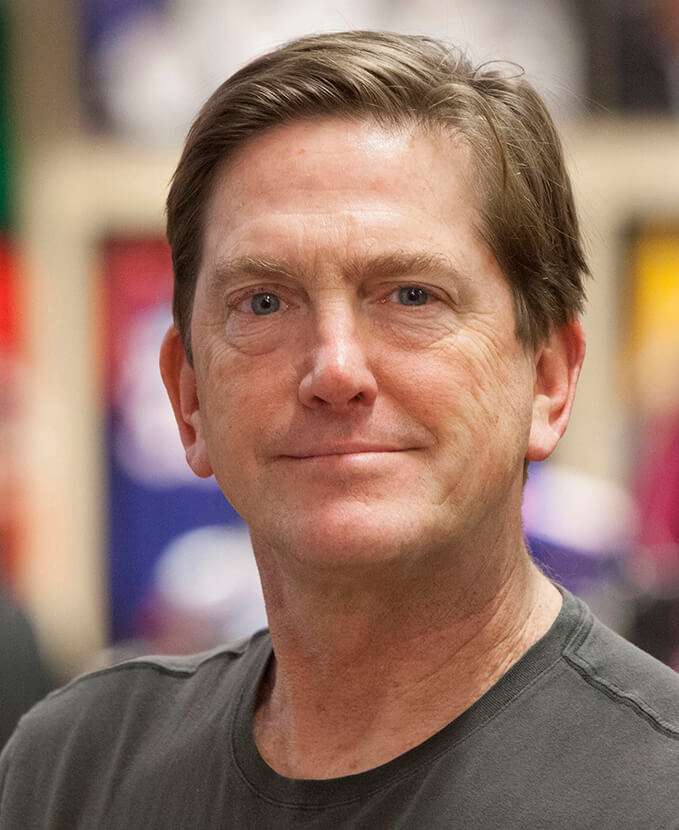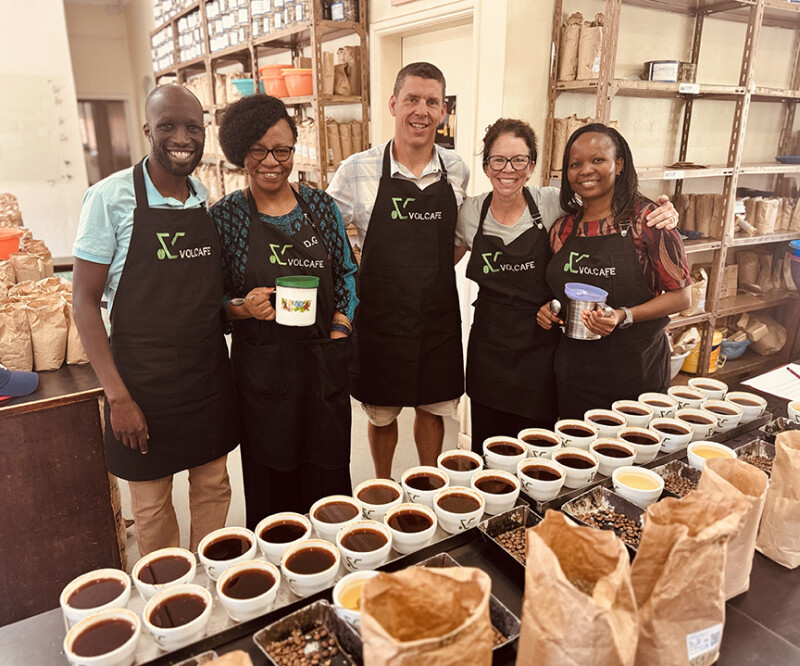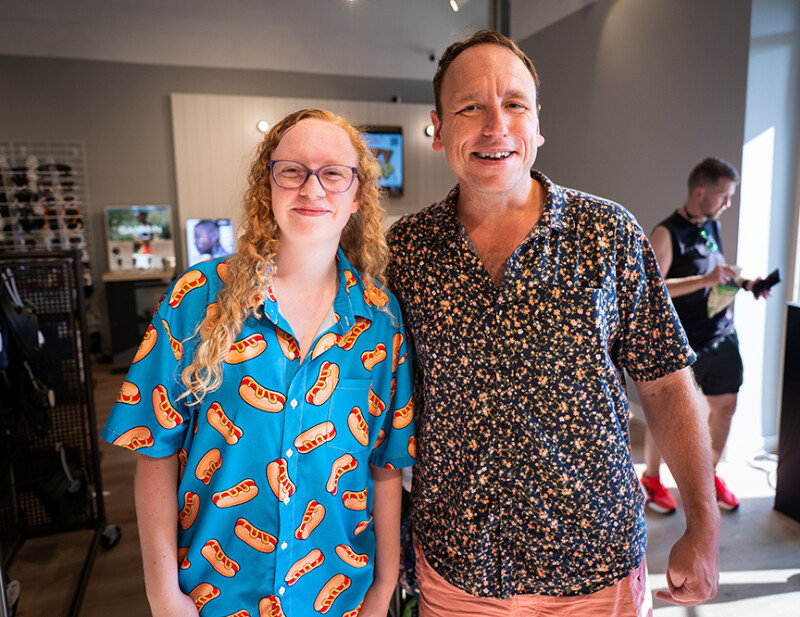As a former national-class endurance athlete, Mike Cosentino is well-known in the run specialty business as owner of Big Peach Running Co. and Big Peach Ride + Run, two concepts that are among the industry’s most awarded and most successful privately held retailers. He has consulted with hundreds of business leaders in various channels and has been a keynote speaker for numerous organizations, including Cox Enterprises, Nike, Sports Distributors of Canada, Centers for Disease Control and Prevention and the National Sporting Goods Association.
His soon-to-be published book, tantalizingly titled “It’s Not the Bricks, It’s the Mortar,” points out that brick-and-mortar retail faces unprecedented challenges and many people might suggest this is when growth-minded leaders have no choice but to personally tighten their operational grip to take complete control of their endeavors.
But Cosentino believes otherwise and stresses now is the time to strive for Uninvolved Optimization – the ultimate destination for total team empowerment – and his book arms leaders with relatable examples and critical formulas to create and maintain processes that raise organizational potential to its peak.
Running Insight recently caught up with Cosentino to find out why he wrote the book — and why now.
Why write this book?
Cosentino: It’s often said that non-fiction authors write the book they themselves need most — and that’s true for me. Over the years, I’ve observed and participated in countless practices that have benefited the retail industry and my own business. At the same time, I discovered that these insights weren’t being documented or shared widely. So I started doing so. Even more recently, some of the best-published content is coming from those who are academics and consultants. That vantage point is really good, but it is not the same. If I want to play the guitar, I want to have some conversations with guitarists — not just those who know music.
And why now?
As for the timing, I had a personal event involving my son and a deadly accident a few years ago. Some of your readers may even remember it, as the support from this community was overwhelming and was the best reflection anyone could imagine of how this channel cheers, fights and prays for its own. In the aftermath – and fueled with inspiration from my son – I decided I could not let my aging collection of notes and the unfinished manuscript sit idle any longer.
What is the message of the book?
It is simple: Retail is a team sport — and a group project. Whether you’re a store manager at a single location or the CEO of a global sporting goods brand with wholesale accounts, your success – and your sense of peace – will depend on your capabilities to “spread the weight evenly.”
Is that from personal experience?
Of course, I learned this the hard way. For years, I carried too much myself. But over time, I discovered that the most effective – and fulfilled – leaders are those who build systems, people and cultures that can thrive without their constant involvement. I call this principle Uninvolved Optimization. It is defined as the condition in which a project, department or enterprise operates effectively without direct instruction from a senior leader or key predecessor.
And to be clear, this concept isn’t about stepping away — it’s about stepping back just enough to allow others to step forward. It’s about creating environments where ownership, initiative and clarity replace bottlenecks, burnout and micromanagement. The book explores both the soft skills (like trust, communication and unity) and the hard skills (like procurement, planning and guest services) that service-industry leaders need to build sustainable success — for their teams and for themselves.
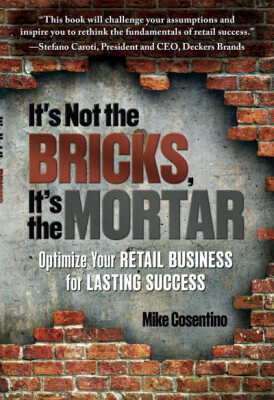
The book has an interesting title. Can you explain it?
“Brick-and-mortar” is an oft-used term for this industry. And though I briefly cover the origin story for this now popular jargon, the title is really an analogy for the industry itself. The bricks are the most visible elements of a retail business. In this channel, those bricks might be the newest footwear releases or midsole technologies, the equipment used to fit customers, the location chosen to house the operation or any other hyper-visible consideration. But, ultimately, it’s not those items that determine the success of the business.
As we all know, there are plenty of retail cadavers that held the best leases, had the best products on their shelves and spent the most money on supposedly unmissable advertising. Instead, it is the lesser-considered ingredients that make the difference and determine our success. These are items like team unity, inventory proficiency, sales associate personality characteristics and net profit assurances. It is the “meaningful mortar” of a retail business that is detailed in the book itself.
Who is the target reader?
Highly desirable, experiential retail is still the absolute best activity to reliably connect a local transaction to the global economy. With that in mind, this book is for those who wish to improve experiential retail in a solid, scaleable manner. To go further, it is also for the motivated leader who understands that growth is nourished most by a capable, empowered team. To be even more specific for this channel, it is for those who choose to pursue their fullest potential alongside others doing the same as new hires, colleagues, vendor partners and industry mentors.
What do you hope our readers take away from reading this book?
In my opinion, there are too many retailers and vendors in sporting goods retail – and I say “sporting goods” intentionally to include, but not be exclusive to, run specialty – because they love running, exercise, the outdoors or some other fitness-minded activity. Of course, this is a fantastic reason to start a role or career in this industry. But it’s not nearly enough to be successful and find the workload satisfying for a longer term.
For leaders in this channel, it is the disciplines of retail that are most important: guest services, retail arithmetic, procurement, organizational dynamics, hospitality ... and so many more crucial practices that must, ultimately, come alongside our love of the activities we promote.
So your message is …?
I want my fellow run specialty retailers to take away an increased appreciation and competence in these business-crucial areas. They matter — a lot. In addition, I want readers to personally grasp how important it is to approach professional opportunities with an obsessive intentionality, with empowerment and toward sharing their authority as leaders.
Writers like to say that they hate writing, but love having written. Do you feel the same way after finishing this book?
Absolutely! Best of all, I’ve come to have an appreciation for what a regular writing practice does for my own clarity of thought. And this book has made me a better writer now, whether with emails, notes of appreciation or Word docs. Along with AI tools, I might just come to understand the meaning of “brevity!”
Finally, any more books in Mike Cosentino’s mind?
Of course. I have a framework for another leadership book under the heading of (no surprise!), The Peach Principles. At the same time, my first book was published in 2003. This comes 22 years later — so there is little danger of me rushing the process.
___________
Excerpts from the Preface of
‘It’s Not the Bricks, It’s the Mortar’
If I’m honest, even I would ask myself this question: Has not enough been written about brick-and-mortar retail and the imperatives necessary for such bold and benevolent enterprises to thrive? To me, it seems the volume of content is already overwhelming. From bestselling books to barely-read blogs, this is a theme drowning in commentary.
Equally intimidating, there are regular cold splashes of reality that reinforce concern. In 2021, the retail industry soberly endured the permanent closure of ten thousand doors while overall consumer spending grew at a booming eight percent. More recently, UBS (a top-20 bank in global assets) shared its belief that it will be lights-out for another forty to fifty thousand stores in the United States by 2026. Whether confirmed or prospective, these types of casualty rates leave a scar on both Main Street and Wall Street — but the dismal headlines no longer seem to surprise either consumers or investors.
Yes, I’m certain I could find a less crowded topic with more momentum to study and editorialize on . . .
Nonetheless, I’m bothered. More specifically, it bothers me that everything I’ve recently and regularly heard or read in this critical service sector is perspective and guidance from people who likely mean well, but — they’re not actually doing it. They are not doing retail. They are not tangibly tied to the daily operations of the more than four million brick-and-mortar retail establishments in the United States. They are not fully immersed in on-site or online selling. They are not directly dependent upon their own provision of hospitality. Or customer service. Or procurement. Or anything that is observably linked to the business of providing these real services that really matter.
Simply put, they are not in the arena.
“It is not the critic who counts; not the man who points out how the strong man stumbles or where the doer of deeds could have done better. The credit belongs to the man who is actually in the arena, whose face is marred by dust and sweat and blood; who strives valiantly; who errs and comes up short again and again, because there is no effort without error or shortcoming; but who does actually strive to do the deeds; who knows the great enthusiasms, the great devotions; who spends himself in a worthy cause; who at the best knows in the end the triumph of high achievement, and who at the worst, if he fails, at least fails while daring greatly, so that his place shall never be with those cold and timid souls who knew neither victory nor defeat.” — Theodore Roosevelt, from speech at the Sorbonne, Paris, April 23, 1910
The irresistible resolve in this presidential quote presents an opposing side to my dilemma. Its spirit inherently defies popular speculation and can be invoked to dismiss the notion that content promoting retail-related prosperity is either dated or saturated. Even better, it is on this side where we find those who already represent an industry that perpetually proves it is greatly resilient and generationally relevant. Standing together, it is all of us who consciously choose pursuits that result in honest commerce, beautifully illustrated through our personally connected service propositions. Every day. We are living it. Breathing it. Betting on it. And betting so much on ourselves.
And, man, so many of us are doing it, oh, so well! We know the retail industry can be a dazzling storefront window into the societal importance we assign to service and serving others. It is legacy work that deserves to be preserved, sustained, continued, and consistently improved.
Despite the naysayers and the negative prospects frequently associated with retail as a discipline or an industry, I’ve resolved my hesitation as to whether more should be published about this profession . . . I guess you could say I care too much to share too little.
But! Hear this, too: The consequences of our decisions and actions are our constant companions. And there are times when we want or even need to step away from our occupational role. In Chapter 1, I share how these lessons unfolded for me. Through the most uncertain season of my life, I learned it is only when we reduce or even unfasten our involvement that our example, our delegation, our training curriculum, and our operational processes are materially tested. The success of our enterprise – and the sum of our previous efforts – becomes fully dependent upon how well we have intentionally prepared others for what we may have initially felt only we could do.
It is this hard-realized awareness that guides this manuscript. As researcher and university professor Brené Brown assertively suggests, “Regret is a fair, but tough, teacher.” I too have found this to be true. In fact, it was this otherwise icky condition that influenced me to greatly adjust my approach to leadership in my retail business. I will refer to this specific adjustment on the pages that follow as “Uninvolved Optimization.” Like much that is difficult at the onset, it has led to an upgraded version of myself and an improved future for others.
Just as importantly, this approach has a prerequisite: “Involved Maximization.” Both concepts underlie a syllabus that goes far beyond basic business survival tactics. Let’s formally define them, remembering that the process of Involved Maximization precedes that of Uninvolved Optimization as a critical frontload:
• Involved Maximization (Task-Oriented): The conscious decision and concerted effort of a leader to approach a project, department or enterprise in a manner that combines the pursuit of results with an intent to transition future iterations of the effort to others.
• Uninvolved Optimization (Target-Focused): The condition in which a project, department or enterprise is operating effectively without direct involvement or instruction from a senior leader and/or key predecessor in the effort.
To be direct, this should be the pervasive approach for motivated leaders with meaningful targets. Whether pursuing new-and-improved products, ambitious goals, undeveloped possibilities or enduring contributions, the ever-shifting demands of change and growth mandate leaders to be on the move without stagnation, lethargy or collapse in their wake. The earned latitude with Uninvolved Optimization is not a systematic hack or shortcut to less work or responsibility. If anything, it is the opposite, as the pursuit of potential is perpetual — and consequential. For top performers, seasons of personal-time poverty are necessary with Involved Maximization to ensure a target-rich future through Uninvolved Optimization. The continuous transition from IM to UO requires the best retail leaders to achieve mastery of both. They consciously remain devoted to Uninvolved Optimization while strategically – and visibly – engaging in Involved Maximization.
So let us delay no longer. The bricks have arrived — and the mortar is being mixed. We will start with a foundation that ensures peak performance in the most critical aspects of our craft and close only when we have a level of confidence that matches the potential impact of our passionate endeavors.
___________
Before the official launch for “It’s Not the Bricks, It’s the Mortar” later this year, there are two exclusive ways for run specialty colleagues and readers of Running Insight to get an advance copy (copies are limited):
• https://itsthemortar.com/product/advance-copy/
• Or as a way to reflect this industry’s enthusiasm for shopping local, get a signed copy by purchasing online at Cosentino’s favorite independent bookstore in Atlanta – A Cappella Books – by CLICKING HERE
